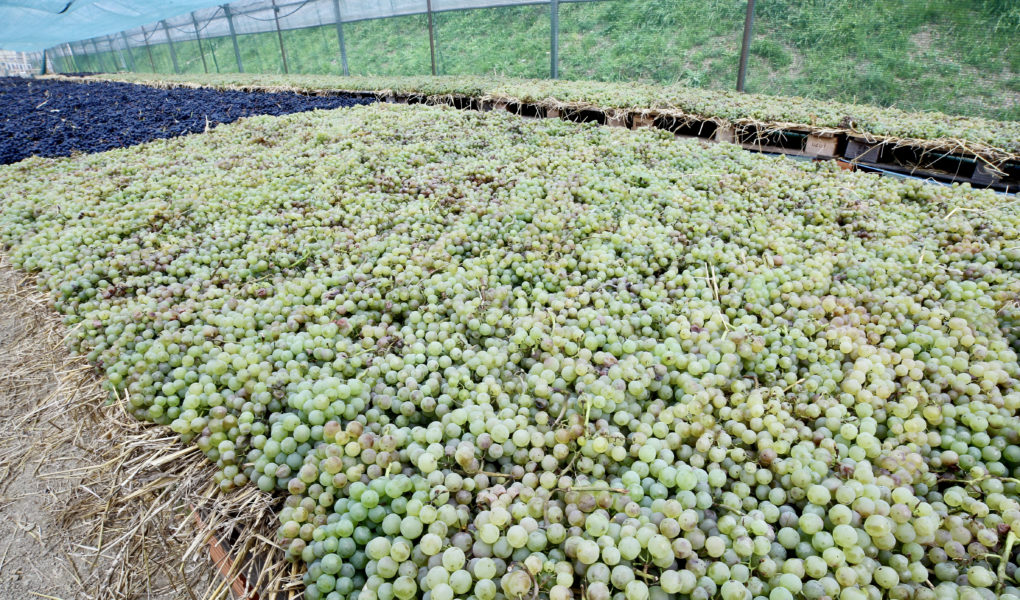This is the 10th in a series of 12 monthly articles following eight Croatian wineries through their year. Catch up on last month’s activities here.
By October, the grapes from this vintage are indeed fermenting, bubbling away in tanks and barrels. But most winegrowers are not yet finished with harvest. For some, harvest may last two months. As Juraj Sladić, at Testament, points out, “We are not harvesting every single day; it’s in phases.” Some grapes ripen early (generally white varieties) and some later (generally black varieties). Younger vineyards are picked before older ones, whose more complex fruit will be used for top-end wines. Adding in the factors of warmer and cooler sites, the weather around harvest time, and which wine each lot of fruit is intended for makes harvest a puzzle with many solutions.
And it’s not only the picking that needs to be finely tuned. Winemaking begins almost immediately after the grapes are picked, to preserve their fresh flavors. As the grapes come in to the winery, the winemaker needs to know where those grapes are headed, how long they will be there, and where they go next. Equipment needs to be clean and space available for each installment of vintage 2021.
Vina Kos
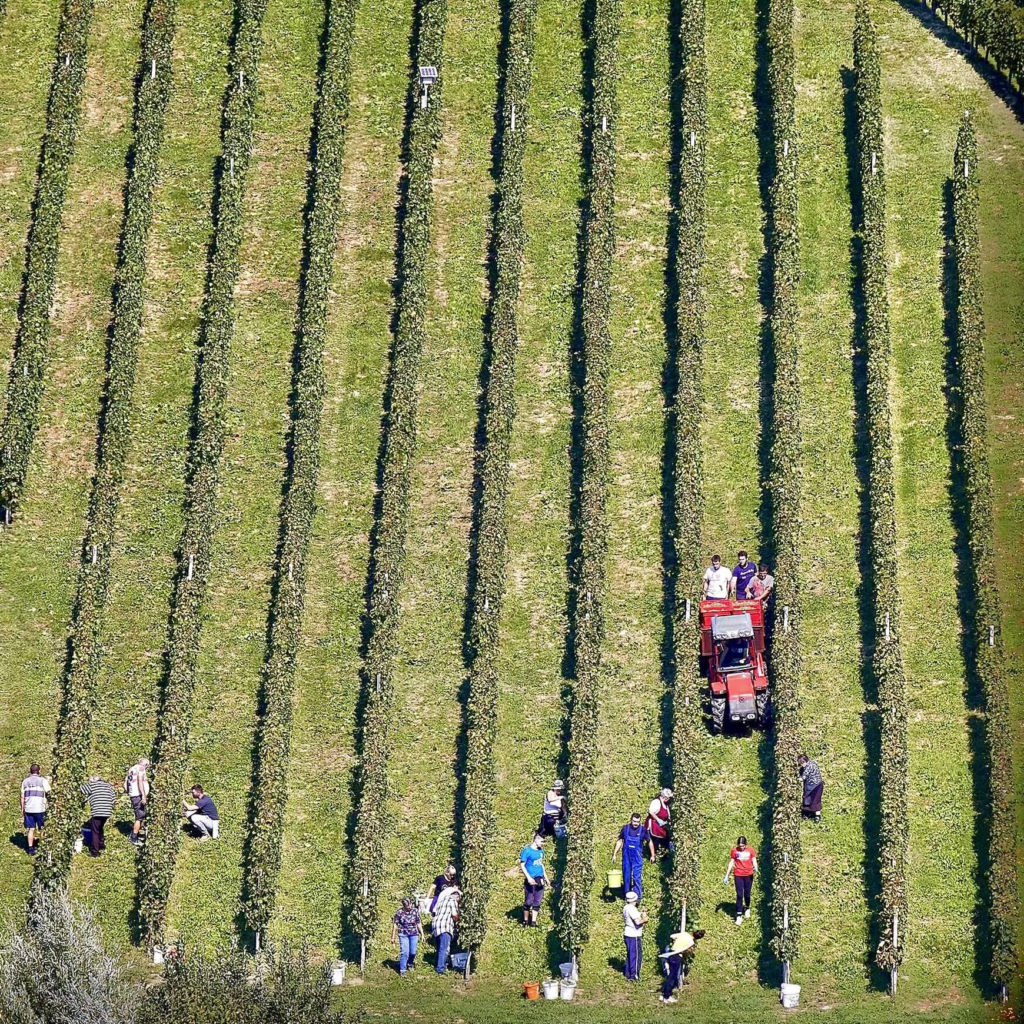
A light weight seems to have lifted from Karlo Kos when we speak on October 4. The previous Friday, his family finished picking.
“We had around 20% less yield than usual,” he said, because of the spring frost in April, which killed some buds on the vines. But partly as a result of the frost, the quality of the fruit is great. “Because of lower yield . . . the grapes get a high level of sugar,” Kos said. The acidity is also very good, which nicely balances the higher sugars in the grapes. “We are very happy about this vintage. I think we will get very complex, full-bodied wine,” said Kos. In particular, he thinks the Pinot Noir will be great this year.
Now the work is in the winery. “Most of the juice right now is in fermentation, so every morning and every evening we come to each tank and we [measure] the sugar level. You need to know every day how much residual sugar is left in the wine and how fermentation is going—too fast or too slow—so you can react very quickly.”
If the fermentation is going too slow, Kos could be looking at a stuck fermentation. The yeasts lack the energy to transform sugars into alcohol. In this case, Kos might add nutrients to get the yeast going again. On the other hand, if the fermentation is too fast, says Kos, “the wine will be without aromas, without freshness.” In this case he might reduce the temperature in the tank—yeast work slower when they’re cool.
White wines are fermented without their skins. For red wine fermentation, juice and skins go into the tank together—the alcohol pulls flavor and color from the skins over the course of about two weeks. But the “cap” of skins that rises to the top of the tank requires management, so the juice has good contact with the skins and so no bacteria are able to form. The cap wants to float, but it needs to be mixed with the juice. There are two main methods for this: punching down and pumping over. In the first, the winemaker periodically “punches” the cap down into the wine from the top of the tank. In the second, a hose is run from the bottom of the tank to the top; juice is pumped out of the bottom and sprayed over the cap, to trickle down into the skins.
“We always have two different tanks, and in one tank we are doing pumping over and in one we are punching down,” said Kos. What are the differences? “Sometimes in pumping over you give the wine more oxygen, and for punching down we are doing it by hand and it’s very gentle. I think with punching down you get more complex wine, but it depends.” Kos will evaluate the results in each tank, and then blend a wine from both.
Harvest can feel like a marathon, but Kos isn’t bothered. “You are exhausted, but you are excited because you finally picked the grapes that you were caring for all year. You forget that you’re tired and you’re just happy.”
Galić
“When you have 20 varieties from two regions and three different locations, you always have something to pick,” says Galić winemaker Slaven Jeličić. Galić started harvest August 14, in Dalmatia. Two months later, they are still harvesting: 12 tons of Cabernet Sauvignon, the last of the 600 tons of grapes they will pick.
Overall this year, yields were lower than usual in Galić’s Slavonia vineyards—for black grapes about 1 kilogram per vine, and for whites 1.5 to 2 kilos. “Considering this lower yield and the hot weather, we will have really strong, powerful and complex red wines,” says Jeličić. “I think this will be one of the best vintages in Kutjevo since I worked there. And whites will be also very complex, very full.”
With 600 tons of grapes coming in, space is at a premium in the winery. “This winery was projected for just 3 hectares from Kutjevo, not 100 hectares from Dalmatia,” says Jeličić. Until Galić’s Dalmatia winery is built, juggling which wines are in which tanks and barrels will be a challenge.
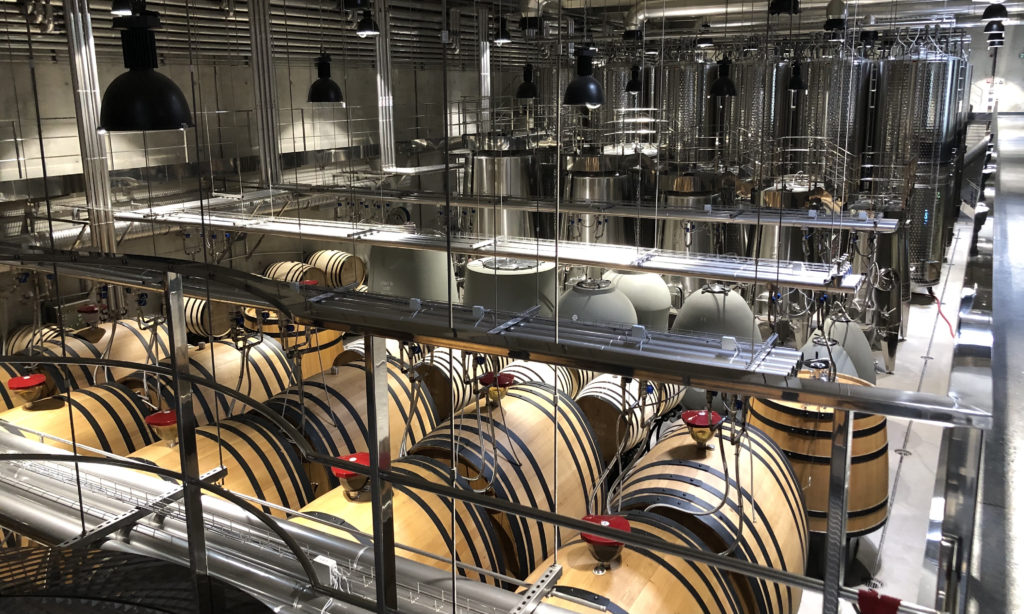
Jeličić has seemingly every type of tank and barrel to choose from, with different volumes, materials and purposes adding complexity to the winemaking equation. Walking through the fermentation hall from one end to the other, first a series of large wooden fermentation vessels hold “one Merlot from Kutjevo, then you have one Crljenak [from Dalmatia], then you have Cabernet Franc and Cabernet Sauvignon, again one Crljenak and then on the other side you have, from Brodski Stupnik, one Cabernet Sauvignon and one [blend],” Jeličić rattles off. All are vintage 2021.
Next to these are 10 elliptical barrels, of 3,300 liters, used for fermentation, malolactic fermentation, or aging. Next, a series of 500-liter barrels holds Chardonnay, Pošip, Graševina, and orange wine. These barrels are mostly for aging, but occasionally a wine will finish fermenting there.
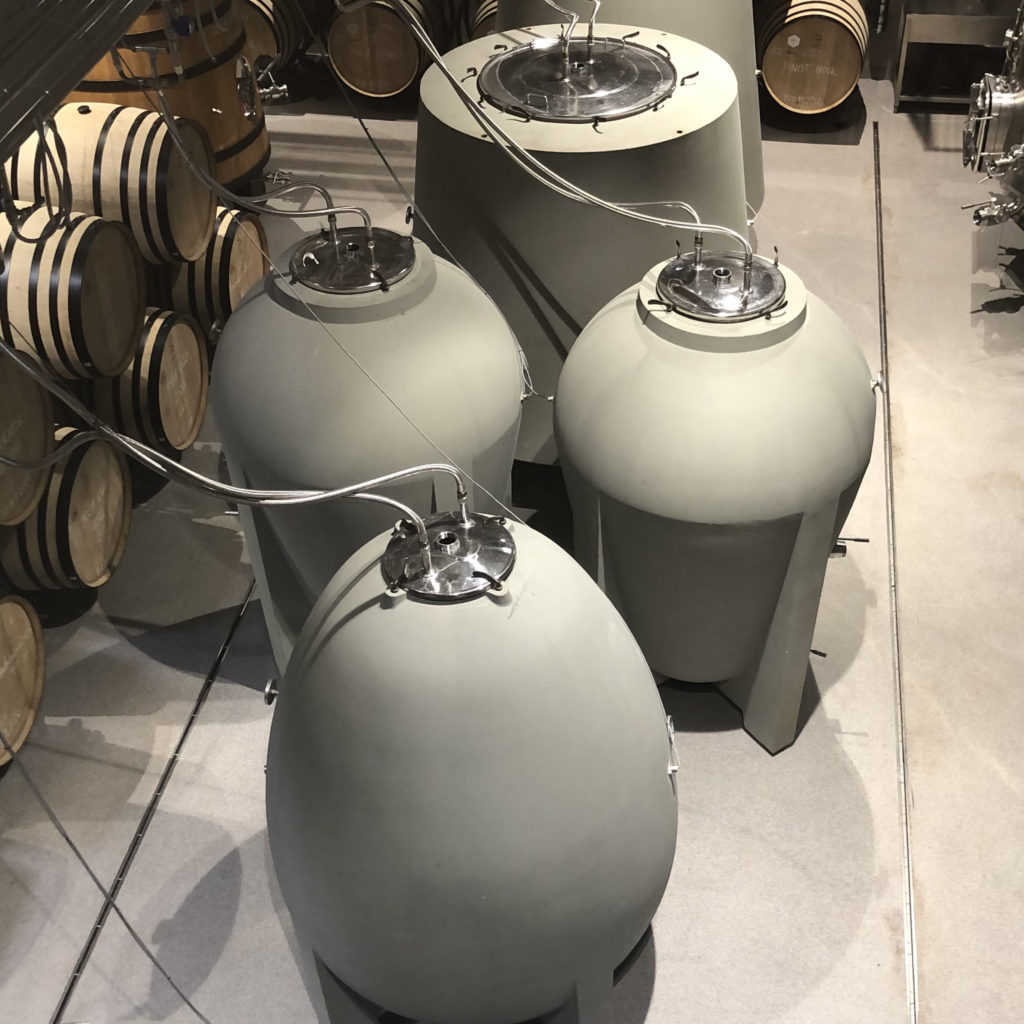
Farther down the line are concrete eggs and tanks. “This year I used these tanks for a lot of things, but usually these are for macerated white wines. Or the two big ones of 3,000 liters, the conical shape, these I use for Plavac Mali, for fermentation,” Jeličić said.
Next come conical stainless steel tanks. “This is something we invented, the shape, the doors . . . They can be used for any type of operation.”
Next to these are the classic stainless steel tanks, but the ones at Galić are stacked in pairs, in volumes from 2,000 to 9,000 liters. These, too, are full of fermenting wine, mostly whites and rosé.
And finally, says Jeličić, “On the end we have microvinification, with 20 small tanks from 300 to 900 liters.” These are used for small-batch fermentations and blending.
A lot of strategy and some experimentation are the keys to this crowded winery. “Sometimes it would be better to have all the possible comfort,” says Jeličić. “But sometimes under pressure you make even better wine. And it’s kind of fun for me. In one moment you have nothing, and then you calculate things and use your brain—and then you lose it, you forget it, and you come upstairs again, downstairs, upstairs, downstairs . . .” Finally, ideas gel, and he writes them on a whiteboard to be implemented.
Benvenuti
Nikola Benvenuti is pleased with vintage 2021 in Istria, which gave the gift of perfect Malvazija. “This year the acidity in all varieties is a bit higher than average. It’s great because Malvazija never has too much acidity—it’s more a problem with low acidity, especially close to the sea,” says Nikola Benvenuti. He looks forward to tasting a bright, fresh Malvazija next spring.
Among the first grapes harvested at Benvenuti, around September 10, was the Muskat to be used for Benvenuti’s famous sweet wines, made from dried grapes. Here, too, acidity is key. “What we always look at when we start to pick Muskat,” said Benvenuti, “it’s always in terms of sugar and acidity, because it’s our opinion that for dried grapes we need to dry really mature grapes. The point of the sweet, it’s that you always have enough acidity.”
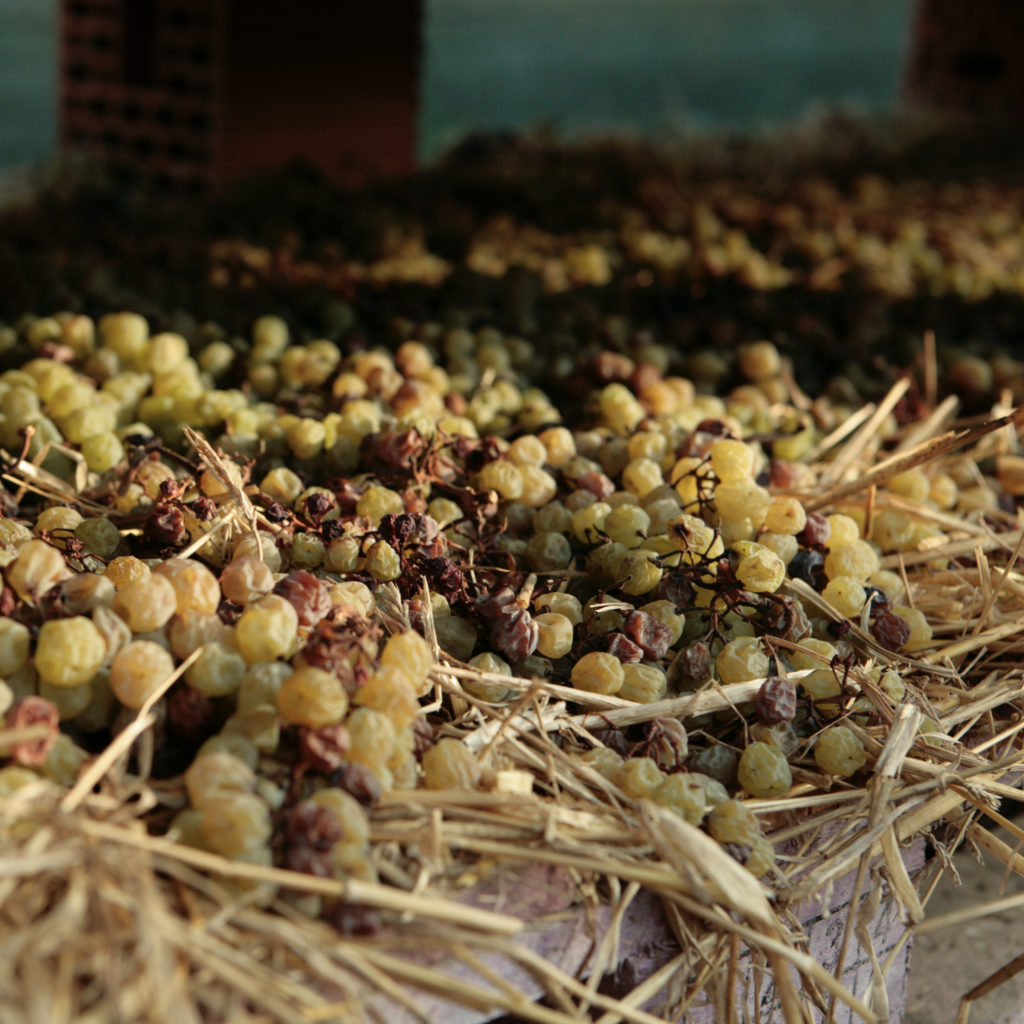
The grapes are dried in a tunnel like a greenhouse covered with plastic sheeting, with benches inside where the grapes are laid out, traditionally on straw. The tunnel keeps the grapes dry, and allows air to circulate around them. But Benvenuti has moved on from straw, which tends to stick to the grapes.
“We now put the grapes on plastic netting and it works very well. You have the air coming from below the grapes. It’s simpler to work with. This year in one part of the tunnel we started to put the grapes in [plastic cases] . . . with perforation on the sides and the bottom. This also works well and maybe this will be our future drying system.” This way, the grapes can be picked right into the cases in the vineyard, which requires much less handling of the fruit and causes less breakage.
It generally takes 2½ to 3 months to dry the grapes. “It depends a lot on the weather,” says Benvenuti. “The craziest year it was six months. It was a rainy autumn and winter and the grapes looked always the same.” Both Muskat and Malvazija are used for these wines. The Malvazija takes longer to dry because it has bigger bunches and fatter berries.
And harvest isn’t quite over yet. As of October 5, Benvenuti still has 1 hectare of Teran on the vines, which he hopes to harvest in about a week when the grapes are at their peak of ripeness. But he has his eye on the forecast. “We want to pick really the top thing and it’s always risky, because you never know if the weather will change. If it’s too much rain in the next ten days we can lose a lot of it. Like in any job, for making the top you have always to take some risk.”
Testament
Testament is nearing the end of its two-month-long harvest period in northern Dalmatia. Winemaker Juraj Sladić explains the order of harvest: first to be picked were the black grapes for rosé and the grapes for sparkling wine—always early, to hold onto their acidity. Then grapes from younger vineyards were picked; these will go into Testament’s everyday label, Dalmatian Dog. Now, in early to mid-October, they are picking the older vineyards for the more expensive “T” label.
It was an extremely dry year, said Sladić, with high temperatures even during nighttime. With no weather disasters here in Dalmatia, the yield was good, but the lack of water caused the berries to be smaller than usual. “Then at the end of August we got a really nice amount of rain, and it helped [swell] the berries, so at the end quality is fantastic,” Sladić said.
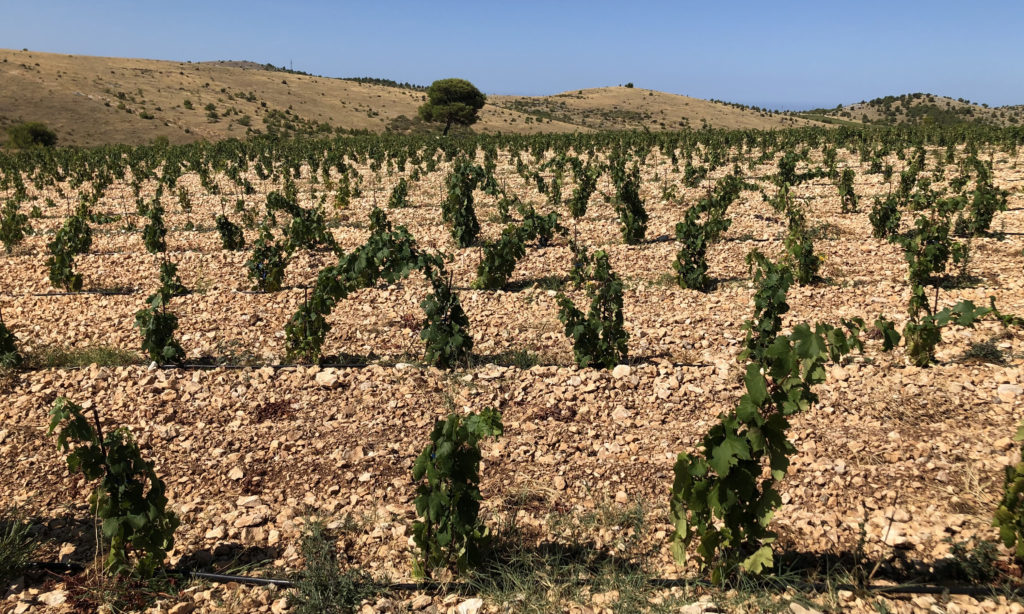
Still to be harvested are the Babić grapes to be made into Dalmatia’s famous sweet wine, Prošek. This will be made from grapes in the oldest vineyard, which will be harvested only after they have dried on the vines. “We need to get raisins,” says Sladić. To this end, at some point late in the season the workers usually pinch the stems of the grape clusters, leaving them hanging on the vine to dry, but cut off from any moisture the vine might send them. The grapes for Prošek can also be dried by laying them on mats or hanging them in a warm room.
It’s a risky business, leaving sweet fruit hanging so late in the season. As Sladić points out, “It’s a factory under open sky. You cannot affect rain, sun, wind, birds. Sometimes someone steals your grapes. It happened in 2017. It was my first harvest here and we were drying Babić almost two months, and we came one Monday and it was all gone. It’s not like someone came and harvested here and there—they harvested everything, 100%.”
Stolen Prošek, the definition of a guilty pleasure.
[Title photo: Just-picked grapes are laid out to dry for Benvenuti’s sweet wines. Photo: Andrej Kriz, courtesy Benvenuti]

